NEW
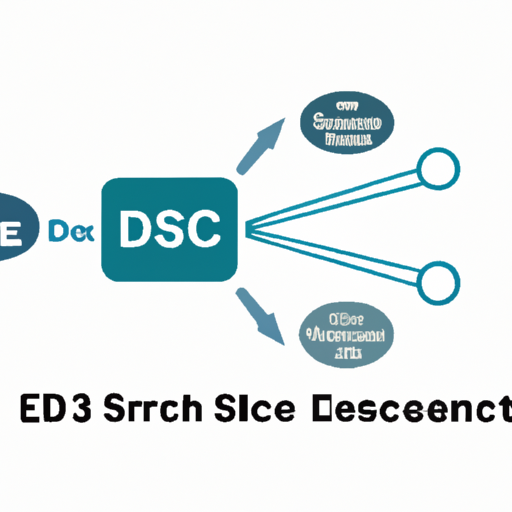
ECS-F1CE225K Direct Digital Synthesis (DDS)Direct Digital Synthesis (DDS) is a sophisticated technology that enables the generation of precise waveforms, including sine, square, triangular, and sawtooth waves, through digital means. The ECS-F1CE225K is a notable DDS chip that exemplifies the capabilities of this technology, offering a range of functionalities that cater to various applications. Below, we delve into the core functional technologies of DDS and explore several application development cases that highlight its effectiveness.
Core Functional Technologies of DDS1. Phase Accumulator2. Look-Up Table (LUT)3. Digital-to-Analog Converter (DAC)4. Frequency Tuning5. Phase Modulation6. Low Phase Noise1. Signal Generators2. Communication Systems3. Software-Defined Radio (SDR)4. Medical Imaging5. Test and Measurement Equipment6. Audio Applications7. Control Systems Application Development Cases ConclusionThe ECS-F1CE225K and similar DDS technologies provide a versatile and powerful means of generating high-quality waveforms across a wide range of applications. Their capabilities for precise frequency control, low phase noise, and rapid tuning make them invaluable in fields such as telecommunications, medical imaging, and audio synthesis. As technology continues to advance, the applications of DDS are expected to expand, further solidifying its importance in modern electronic systems. The ECS-F1CE225K stands as a testament to the potential of DDS technology, paving the way for innovative solutions in various industries.
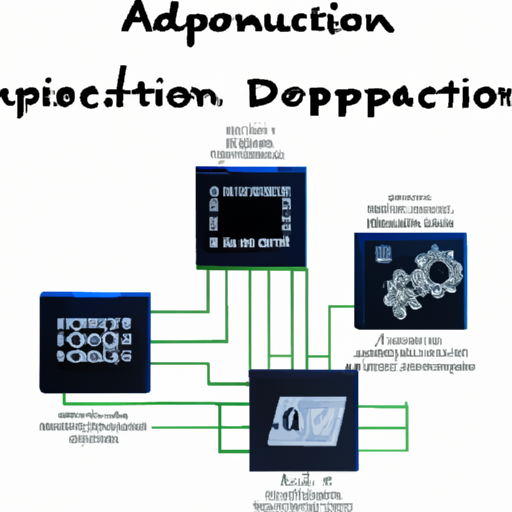
Application Development in Modems - ICs and Modules for CFR-12JB-52-110R: Key Technologies and Success StoriesThe CFR-12JB-52-110R is a specific model of a modem that is often utilized in various applications, particularly in industrial and commercial settings. While specific details about this model may not be widely available, we can explore the key technologies that underpin modem development and highlight success stories that illustrate their impact across different sectors.
Key Technologies in Modem Development1. Digital Signal Processing (DSP)2. Software-Defined Radio (SDR)3. Low Power Consumption4. High Data Rates5. Wireless Communication Standards6. Integration and Miniaturization7. Security Features1. Smart Metering2. Telemedicine3. Industrial IoT (IIoT)4. Smart Agriculture5. Connected Vehicles6. Home Automation Success Stories in Modem Application Development ConclusionThe development of modems, particularly ICs and modules like the CFR-12JB-52-110R, has been driven by technological advancements and the growing demand for connectivity across various sectors. Success stories in smart metering, telemedicine, IIoT, smart agriculture, connected vehicles, and home automation illustrate the transformative impact of modem technology on modern applications. As technology continues to evolve, we can anticipate even more innovative uses for modems in the future, further enhancing connectivity and efficiency across industries.
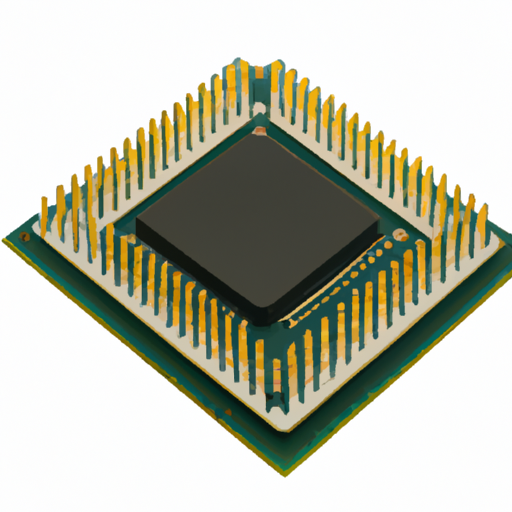
Certainly! Below is an overview of core functional technologies related to S6008L microcontrollers, microprocessors, and FPGA modules, along with application development cases that highlight their effectiveness.
Core Functional Technologies 1. **Microcontrollers (MCUs)**
- **Architecture**: Microcontrollers typically integrate a CPU, memory (RAM and Flash), and peripherals on a single chip. The S6008L, for instance, may feature a low-power architecture suitable for battery-operated devices.
- **I/O Interfaces**: MCUs often include various I/O interfaces such as GPIO, UART, SPI, and I2C, enabling communication with sensors and other devices.
- **Power Management**: Many MCUs have built-in power management features, allowing them to operate in low-power modes, which is crucial for energy-efficient applications.
- **Real-Time Operating Systems (RTOS)**: Some applications may require multitasking capabilities, which can be achieved using an RTOS tailored for microcontrollers. 2. **Microprocessors**
- **Performance**: Microprocessors are designed for high-performance applications, often featuring higher clock speeds and more complex architectures than microcontrollers.
- **Memory Management**: They typically support larger memory capacities and advanced memory management techniques, making them suitable for running complex operating systems like Linux or Windows.
- **Multicore Processing**: Many modern microprocessors support multicore architectures, allowing for parallel processing and improved performance in multitasking environments. 3. **FPGA Modules**
- **Reconfigurability**: FPGAs can be reprogrammed to perform different tasks, making them highly versatile for various applications, from digital signal processing to custom hardware accelerators.
- **Parallel Processing**: FPGAs excel in parallel processing capabilities, allowing multiple operations to be executed simultaneously, which is beneficial for high-speed applications.
- **Integration with Other Technologies**: FPGAs can be integrated with microcontrollers and microprocessors to offload specific tasks, enhancing overall system performance. Application Development Cases 1. **Smart Home Automation (Microcontrollers)**
- **Case Study**: Using the S6008L microcontroller, developers can create smart home devices such as smart thermostats or lighting systems. The MCU can interface with temperature sensors and control relays for heating or lighting, all while maintaining low power consumption.
- **Outcome**: Enhanced energy efficiency and user control through mobile applications. 2. **Industrial Automation (Microprocessors)**
- **Case Study**: A microprocessor-based control system can be developed for an industrial automation application, such as a robotic arm. The system can run complex algorithms for motion control and integrate with vision systems for object recognition.
- **Outcome**: Increased productivity and precision in manufacturing processes. 3. **Signal Processing (FPGA Modules)**
- **Case Study**: An FPGA module can be used in a digital signal processing application, such as real-time audio processing. The FPGA can be programmed to implement filters, equalizers, and effects, providing high-quality audio output.
- **Outcome**: Low-latency processing and the ability to adapt to different audio processing needs. 4. **Wearable Health Devices (Microcontrollers)**
- **Case Study**: A wearable health monitoring device can be developed using the S6008L microcontroller, integrating sensors for heart rate, temperature, and motion. The device can communicate with a smartphone app via Bluetooth.
- **Outcome**: Continuous health monitoring and data collection for users, promoting proactive health management. 5. **Automotive Applications (FPGA Modules)**
- **Case Study**: FPGAs can be utilized in automotive applications for advanced driver-assistance systems (ADAS). They can process data from multiple sensors (cameras, LIDAR) in real-time to assist with navigation and safety features.
- **Outcome**: Improved safety and efficiency in driving through real-time data processing and decision-making. Conclusion
The S6008L microcontrollers, microprocessors, and FPGA modules each offer unique capabilities that can be leveraged across various applications. By understanding their core technologies and exploring effective application development cases, developers can create innovative solutions that meet the demands of modern technology.

Application Development in Parity Generators and Checkers for CFR-12JB-52-110R: Key Technologies and Success StoriesParity generators and checkers play a crucial role in ensuring data integrity across various digital systems. The CFR-12JB-52-110R, a specific component often used in electronic applications, can benefit significantly from the implementation of these technologies. Below, we explore the key technologies involved in developing applications for parity generators and checkers, as well as notable success stories across different industries.
Key Technologies1. Digital Logic Design2. Error Detection and Correction Algorithms3. Simulation and Testing Tools4. Embedded Systems5. Communication Protocols1. Telecommunications2. Data Storage Solutions3. Consumer Electronics4. Automotive Systems5. Aerospace and Defense Success Stories ConclusionThe development of applications involving parity generators and checkers, such as those for the CFR-12JB-52-110R, relies on a combination of digital logic design, error detection algorithms, and modern simulation tools. The success stories across various industries underscore the importance of these technologies in maintaining data integrity and reliability in critical systems. As technology continues to advance, the role of parity checkers and generators will remain essential in ensuring robust digital communications and data storage solutions, paving the way for future innovations in electronic design and application development.

Application Development in Hot Swap Controllers for 1N5244B-T: Key Technologies and Success StoriesThe 1N5244B-T is a Zener diode widely utilized for voltage regulation in electronic applications. When integrating Hot Swap Controllers with this component, it is essential to understand the operational context of Hot Swap Controllers and how they can effectively work with Zener diodes like the 1N5244B-T.
Key Technologies in Hot Swap Controllers1. Hot Swap Technology: This technology enables components to be added or removed from a live circuit without interrupting system operation. Hot Swap Controllers manage power and signal connections to ensure safe insertion and removal of components, minimizing the risk of damage. 2. Power Management ICs (PMICs): These integrated circuits oversee power distribution and often incorporate Hot Swap functionality. They typically feature current limiting, over-voltage protection, and thermal shutdown capabilities, enhancing system reliability.
3. Voltage Regulation: The 1N5244B-T Zener diode can be paired with Hot Swap Controllers to provide stable voltage regulation. This is crucial during the Hot Swap process, as it protects sensitive components from voltage spikes and ensures consistent performance.
4. Current Sensing: Hot Swap Controllers frequently include current sensing features to monitor load current and prevent overcurrent conditions. This is vital for safeguarding both the controller and the connected load.
5. Control Logic: The control logic within Hot Swap Controllers manages the timing and sequencing of power connections, ensuring that power is applied in a controlled manner to prevent inrush currents that could damage components.
6. Thermal Management: Effective thermal management is critical in Hot Swap applications to prevent overheating. This can involve features like thermal shutdown or the use of heat sinks to dissipate excess heat.
Success Stories1. Telecommunications Equipment: Telecommunications systems often rely on Hot Swap Controllers to allow for the replacement of power supplies without downtime. The integration of Zener diodes like the 1N5244B-T helps maintain voltage stability during these operations, ensuring uninterrupted service.
2. Data Centers: In data centers, Hot Swap technology is essential for maintaining uptime. Power supplies and other components can be replaced without shutting down servers. The use of Zener diodes for voltage regulation protects sensitive equipment during component swaps, enhancing reliability.
3. Industrial Automation: Hot Swap Controllers are integral to industrial automation systems where reliability is crucial. The combination of these controllers with Zener diodes provides robust voltage regulation, ensuring that control systems remain operational even during component replacements.
4. Consumer Electronics: In consumer electronics, Hot Swap technology is increasingly adopted in devices requiring modular components. The integration of Zener diodes helps protect against voltage fluctuations that may occur during component swaps, improving device longevity and performance.
5. Medical Devices: In medical applications, where reliability and safety are paramount, Hot Swap Controllers facilitate the maintenance of devices without interrupting patient care. The use of Zener diodes ensures stable voltage levels, protecting sensitive medical electronics and enhancing patient safety.
ConclusionThe integration of Hot Swap Controllers with components like the 1N5244B-T Zener diode signifies a substantial advancement in designing reliable and maintainable electronic systems. By leveraging key technologies such as power management, current sensing, and thermal management, developers can create robust applications that meet the demands of various industries. Success stories across telecommunications, data centers, industrial automation, consumer electronics, and medical devices underscore the effectiveness of these technologies in real-world applications, highlighting their critical role in enhancing system reliability and performance.

Overview of Digital PotentiometersDigital potentiometers, or digipots, are electronic components that replicate the functionality of traditional variable resistors (potentiometers) but are controlled through digital signals. They are increasingly utilized in various applications, including audio equipment, sensor calibration, and adjustable gain control in amplifiers. The 1N5243B-T is a notable model of a digital potentiometer, offering distinct features and capabilities that enhance its utility in modern electronic designs.
Core Functional Technology1. Digital Control: Digital potentiometers are operated via digital communication protocols such as I2C, SPI, or UART. This digital control allows for precise adjustments and seamless integration with microcontrollers and other digital systems, enabling automated and remote operation. 2. Non-Volatile Memory: A key feature of many digital potentiometers, including the 1N5243B-T, is non-volatile memory. This capability ensures that the last set resistance value is retained even when power is disconnected, making it essential for applications where settings must be preserved across power cycles.
3. Multi-Turn and Single-Turn Options: Digital potentiometers are available in both multi-turn and single-turn configurations. Multi-turn pots provide finer adjustments over a greater range, while single-turn pots offer quicker adjustments, catering to different application needs.
4. Programmable Resistance Values: Users can program specific resistance values, allowing for precise control over circuit parameters. This feature is particularly beneficial in applications requiring calibration or tuning, where exact resistance settings are critical.
5. Integrated Features: Many digital potentiometers come with additional functionalities, such as programmable wiper positions, multiple channels, and built-in amplifiers. These integrated features enhance their versatility and applicability across various domains.
Application Development Cases1. Audio Equipment: Digital potentiometers are extensively used in audio applications for functions like volume control, tone adjustment, and balance settings. The digital control allows for remote operation and automation, making them ideal for modern audio systems.
2. Sensor Calibration: In sensor applications, digital potentiometers can be employed to calibrate sensor outputs. By digitally adjusting the resistance, engineers can fine-tune sensor readings for improved accuracy, which is crucial in precision measurement systems.
3. Adjustable Gain Amplifiers: In amplifiers, digital potentiometers can control gain settings dynamically. This capability allows for real-time adjustments based on input signals, enhancing the performance of audio and signal processing systems.
4. Industrial Automation: In industrial environments, digital potentiometers can be integrated into control systems for machinery and equipment. They provide precise control over operational parameters, improving efficiency, reliability, and adaptability in automated processes.
5. Consumer Electronics: Digital potentiometers are increasingly found in consumer electronics, such as televisions and smart devices. They can control settings like brightness, contrast, and volume through user-friendly interfaces, enhancing the user experience.
ConclusionDigital potentiometers, exemplified by the 1N5243B-T, represent a significant advancement over traditional potentiometers, offering enhanced control, precision, and integration capabilities. Their applications span a wide range of industries, from audio and consumer electronics to industrial automation and sensor calibration. As technology continues to evolve, the role of digital potentiometers in modern electronic design is expected to expand, providing innovative solutions for engineers and developers seeking to enhance functionality and performance in their projects.

Application Development in CODECS for 1N5242B-T: Key Technologies and Success StoriesThe 1N5242B-T is a Zener diode widely used for voltage regulation in electronic applications. While CODECS typically refers to encoding and decoding technologies, we can explore how Zener diodes like the 1N5242B-T play a crucial role in electronic design, particularly in systems that may involve CODECS for data transmission and processing.
Key Technologies1. Voltage Regulation Circuits2. Power Supply Design3. Signal Conditioning4. Microcontroller Interfacing5. LED Drivers1. Consumer Electronics2. Automotive Applications3. Industrial Automation4. Telecommunications5. Medical Devices Success Stories ConclusionWhile the 1N5242B-T Zener diode may not directly relate to CODECS, its applications in voltage regulation and protection are vital across various industries, including those that utilize CODEC technologies. The success stories illustrate the importance of reliable components in consumer electronics, automotive systems, industrial automation, telecommunications, and medical devices. As technology continues to evolve, the role of Zener diodes in ensuring the stability and safety of electronic systems, particularly those involving data encoding and decoding, remains significant.

Overview of DC-DC Switching ControllersDC-DC switching controllers are essential components in modern electronic systems, enabling efficient power conversion and management. They are designed to convert a source of direct current (DC) from one voltage level to another, either stepping it up (boost) or stepping it down (buck), while maintaining high efficiency. Below, we explore the core functional technologies and application development cases of DC-DC switching controllers.
Core Functional Technologies of DC-DC Switching Controllers1. Buck Converter2. Boost Converter3. Buck-Boost Converter4. Control Techniques5. Integrated Circuits (ICs)6. Synchronous Rectification7. Soft Start1. Consumer Electronics2. Automotive Applications3. Industrial Automation4. Telecommunications5. Renewable Energy Systems6. Medical Devices Application Development Cases ConclusionDC-DC switching controllers are integral to modern electronic systems, providing efficient power management across a diverse range of applications. Their ability to adapt to varying input and output conditions makes them indispensable in consumer electronics, automotive, industrial, telecommunications, renewable energy, and medical fields. Understanding the core technologies and application cases enables engineers to design more effective and efficient power solutions, ultimately enhancing the performance and reliability of electronic devices.

Application Development in UARTs (Universal Asynchronous Receiver Transmitter) for 1N5240B-T: Key Technologies and Success StoriesThe 1N5240B-T is a Zener diode primarily used for voltage regulation, and while it is not a UART component, it plays a significant role in enhancing the reliability and performance of UART-based applications. Below, we explore key technologies related to UART development, the integration of the 1N5240B-T, and notable success stories.
Key Technologies in UART Development1. Asynchronous Communication 2. Baud Rate Configuration 3. Data Framing 4. Error Detection 5. Flow Control 6. Voltage Level Shifting 1. Voltage Regulation 2. Protection Against Voltage Spikes 3. Signal Conditioning 1. Embedded Systems 2. IoT Devices 3. Consumer Electronics 4. Robotics Integrating 1N5240B-T in UART Applications Success Stories ConclusionWhile the 1N5240B-T is not a UART component, its role in voltage regulation and protection is invaluable in UART-based applications. By ensuring stable operation and safeguarding against voltage spikes, it enhances the reliability and performance of various projects across multiple industries, including embedded systems, IoT, consumer electronics, and robotics. As technology continues to advance, the integration of reliable components like the 1N5240B-T will remain essential for the development of robust UART applications, ensuring they meet the demands of modern electronic systems.

Overview of MultivibratorsMultivibrators are fundamental electronic circuits that generate specific waveforms, primarily square waves, and are essential in various applications ranging from simple timers to complex digital systems. They are categorized into three main types: astable, monostable, and bistable multivibrators, each serving distinct functions and applications.
Core Functional Technology of Multivibrators1. Astable Multivibrator2. Monostable Multivibrator3. Bistable Multivibrator1. LED Flasher Circuit (Astable Multivibrator)2. Timer Circuit (Monostable Multivibrator)3. Data Storage (Bistable Multivibrator)4. Tone Generator (Astable Multivibrator)5. Frequency Generator Key Components in MultivibratorsTransistors: Serve as the primary switching elements, amplifying and controlling electronic signals.Transistors: Serve as the primary switching elements, amplifying and controlling electronic signals.Resistors and Capacitors: Determine the timing characteristics, frequency of oscillation, and stability of the circuit.Resistors and Capacitors: Determine the timing characteristics, frequency of oscillation, and stability of the circuit.Diodes: Used for waveform shaping and clamping, ensuring proper signal integrity.Diodes: Used for waveform shaping and clamping, ensuring proper signal integrity. Application Development Cases ConclusionMultivibrators are versatile circuits that play a crucial role in a wide range of electronic applications. Their ability to generate precise timing signals and control states makes them essential in both analog and digital electronics. Understanding their operation and applications can lead to innovative designs in consumer electronics, automotive systems, and industrial automation. By leveraging the unique characteristics of each type of multivibrator, engineers can create efficient and effective solutions tailored to specific needs.

Overview of Encoders, Decoders, and ConvertersEncoders, decoders, and converters are fundamental components in electronic systems, facilitating the transformation of data between different formats. Their applications are widespread, impacting various industries, including automation, telecommunications, consumer electronics, and healthcare. Below is a detailed exploration of these technologies, their core functionalities, and notable application development cases.
Core Functional Technologies 1. **Encoders**
Encoders are devices that convert physical parameters (like position, speed, or direction) into a digital signal. They are essential for providing feedback in control systems.Types of Encoders:Types of Encoders:Types of Converters:Types of Converters:Rotary Encoders: Measure the rotation of a shaft and output a corresponding digital signal. Commonly used in robotics, industrial automation, and consumer electronics.Rotary Encoders: Measure the rotation of a shaft and output a corresponding digital signal. Commonly used in robotics, industrial automation, and consumer electronics.Linear Encoders: Measure linear displacement and are often used in CNC machines and 3D printers.Linear Encoders: Measure linear displacement and are often used in CNC machines and 3D printers.Analog-to-Digital Converters (ADC): Convert analog signals (like sound or light) into digital data.Analog-to-Digital Converters (ADC): Convert analog signals (like sound or light) into digital data.Digital-to-Analog Converters (DAC): Convert digital data back into analog signals.Digital-to-Analog Converters (DAC): Convert digital data back into analog signals. 2. **Decoders**
Decoders reverse the encoding process, converting encoded data back into its original format. They are crucial in digital circuits and communication systems. 3. **Converters**
Converters change data from one format to another, often bridging analog and digital systems. Application Development Cases 1. **Industrial Automation**
In industrial automation, encoders are integral to robotic systems and conveyor belts. For example, a rotary encoder can provide precise position feedback for a robotic arm, allowing it to perform tasks like assembly with high accuracy. This precision enhances productivity and reduces errors in manufacturing processes. 2. **Consumer Electronics**
In consumer electronics, encoders and decoders are vital for audio and video processing. For instance, audio encoders compress sound files for efficient storage and transmission, while decoders ensure accurate playback. This technology is essential for streaming services, where efficient data handling is crucial for user experience. 3. **Medical Devices**
In medical imaging, ADCs convert analog signals from imaging sensors into digital data for analysis. For example, MRI machines utilize ADCs to transform the analog signals generated during scans into digital images, enabling healthcare professionals to diagnose conditions accurately. 4. **Telecommunications**
Decoders are critical in telecommunications for maintaining data integrity. In digital communication systems, data is often encoded to minimize transmission errors. At the receiving end, decoders interpret the encoded data, ensuring that the original message is reconstructed accurately, which is vital for reliable communication. 5. **Automotive Applications**
In modern vehicles, encoders are used in systems like steering and throttle control, providing feedback to enhance safety and performance. Additionally, ADCs are employed in sensor systems to monitor engine performance and environmental conditions, contributing to improved fuel efficiency and reduced emissions. Conclusion
Encoders, decoders, and converters are indispensable in modern technology, enabling seamless data transformation across various systems and formats. Their applications span multiple industries, underscoring their versatility and significance in developing advanced technological solutions. As technology continues to advance, the demand for efficient encoding, decoding, and conversion methods will grow, driving further innovation in this field. The ongoing evolution of these technologies will likely lead to enhanced performance, greater efficiency, and new applications in the future.

Overview of FIFO MemoryFIFO Memory (First In, First Out) is a type of data structure that allows for the orderly processing of data elements. The first element added to the FIFO is the first one to be removed, making it ideal for applications where the order of data processing is critical. This memory type is widely used in various fields, including telecommunications, data acquisition, and embedded systems.
Core Functional Technology1. Data Buffering: FIFO memory serves as a temporary storage area that holds data being transferred between devices or processes. This buffering capability is crucial for managing data flow and preventing data loss during transmission. 2. Asynchronous Data Transfer: FIFOs are particularly useful in scenarios where data production and consumption rates differ. They allow for smooth data transfer without requiring synchronization between the producer and consumer, thus accommodating varying processing speeds.
3. Control Signals: FIFO memory typically includes control signals such as "write enable," "read enable," "full," and "empty" flags. These signals help manage data flow, ensuring that the buffer does not overflow or underflow.
4. Depth and Width: FIFO memory can be customized in terms of depth (the number of entries it can hold) and width (the size of each data entry). This flexibility allows designers to optimize FIFO memory for specific application requirements.
5. Synchronous vs. Asynchronous: FIFOs can be implemented as synchronous (operating with a clock signal) or asynchronous (operating without a clock signal), depending on the needs of the application.
Application Development Cases1. Data Acquisition Systems: FIFO memory is essential in data acquisition systems, where it buffers data from sensors before processing. This ensures real-time data collection without loss, even if the processing unit is temporarily busy.
2. Networking Equipment: Routers and switches utilize FIFO buffers to manage incoming and outgoing data packets. This helps maintain packet order and prevents data loss during high traffic conditions, ensuring efficient network performance.
3. Audio and Video Streaming: In multimedia applications, FIFO memory is critical for buffering audio and video streams. It ensures smooth playback by managing data flow and preventing interruptions during streaming.
4. Microcontroller Communication: In embedded systems, FIFOs facilitate communication between microcontrollers and peripherals (e.g., UART, SPI, I2C). They help manage data flow, ensuring that data is processed in the correct order and at the right time.
5. Industrial Automation: FIFO memory is used in industrial automation systems to buffer data from various sensors and actuators. This allows for efficient real-time data processing and control, enhancing system responsiveness and reliability.
6. Graphics Processing: In graphics processing units (GPUs), FIFO buffers manage the flow of data between different processing units. This ensures that rendering tasks are completed in the correct order, improving overall graphics performance.
ConclusionFIFO memory is a fundamental technology in modern computing and electronics, providing essential functionality for data management across various applications. Its ability to handle asynchronous data transfer and maintain the order of data makes it invaluable in fields ranging from telecommunications to industrial automation. Understanding FIFO memory's core functionalities and applications can empower developers to design more efficient and reliable systems, ultimately enhancing performance and user experience.

Certainly! Here’s a more detailed overview of gates and inverters, their core functional technologies, and specific application development cases, while also clarifying the role of the 1N5232B-T Zener diode in electronic circuits.
Core Functional Technology of Gates and InvertersAND Gate: Outputs true (1) only if all inputs are true. Used in decision-making circuits.AND Gate: Outputs true (1) only if all inputs are true. Used in decision-making circuits.OR Gate: Outputs true if at least one input is true. Commonly used in alarm systems.OR Gate: Outputs true if at least one input is true. Commonly used in alarm systems.NOT Gate (Inverter): Outputs the opposite of the input. Essential for signal inversion and logic level shifting.NOT Gate (Inverter): Outputs the opposite of the input. Essential for signal inversion and logic level shifting.NAND Gate: Outputs false only if all inputs are true. Widely used due to its universal property (can create any logic function).NAND Gate: Outputs false only if all inputs are true. Widely used due to its universal property (can create any logic function).NOR Gate: Outputs true only if all inputs are false. Also universal and used in various logic designs.NOR Gate: Outputs true only if all inputs are false. Also universal and used in various logic designs.XOR Gate: Outputs true if an odd number of inputs are true. Used in arithmetic circuits and error detection.XOR Gate: Outputs true if an odd number of inputs are true. Used in arithmetic circuits and error detection.XNOR Gate: Outputs true if an even number of inputs are true. Useful in equality checking circuits.XNOR Gate: Outputs true if an even number of inputs are true. Useful in equality checking circuits.Signal Conditioning: Ensuring signals are at the correct logic levels.Signal Conditioning: Ensuring signals are at the correct logic levels.Level Shifting: Converting signals from one voltage level to another.Level Shifting: Converting signals from one voltage level to another.Feedback Loops: Used in oscillators and flip-flops for memory storage.Feedback Loops: Used in oscillators and flip-flops for memory storage. Application Development Cases The Role of the 1N5232B-T Zener DiodeWhile the 1N5232B-T is a Zener diode, it plays a different role in electronic circuits compared to gates and inverters. Zener diodes are primarily used for voltage regulation and protection. They maintain a constant output voltage despite variations in input voltage or load conditions. This makes them essential in power supply circuits, where they can protect sensitive components from voltage spikes. ConclusionGates and inverters are foundational components in digital electronics, enabling a wide range of applications from simple logic circuits to complex systems in computing, communication, and automation. Their versatility and efficiency make them essential in modern electronic design and development. Meanwhile, components like the 1N5232B-T Zener diode complement these systems by providing voltage regulation and protection, showcasing the diverse roles different electronic components play in circuit design.
If you have specific applications or technologies in mind, or if you would like to explore more about Zener diodes or other components, feel free to ask!
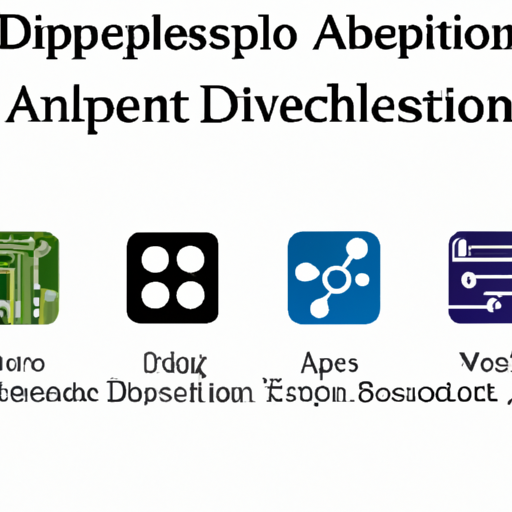
Application Development in Buffers, Drivers, Receivers, and Transceivers for 1N5231B-T: Key Technologies and Success StoriesThe 1N5231B-T is a widely used Zener diode that plays a critical role in voltage regulation and protection across various electronic applications. When integrated with buffers, drivers, receivers, and transceivers, it enhances the performance and reliability of electronic circuits. Below, we explore the key technologies involved and highlight some success stories that illustrate the effective application of these components.
Key Technologies1. Buffers2. Drivers3. Receivers4. Transceivers1. Consumer Electronics2. Automotive Applications3. Industrial Automation4. Telecommunications Success Stories ConclusionThe integration of the 1N5231B-T Zener diode with buffers, drivers, receivers, and transceivers is essential for developing reliable and efficient electronic systems. By leveraging these components, engineers can create solutions that enhance performance, protect against voltage spikes, and ensure signal integrity across various applications, from consumer electronics to industrial automation and telecommunications. The success stories in these fields underscore the importance of careful design and component selection in achieving desired outcomes, ultimately leading to innovative and robust electronic solutions.
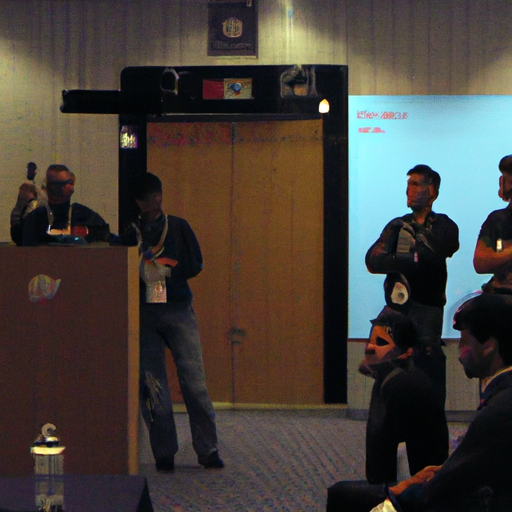
Application Development in Telecom for 1N5228B-T: Key Technologies and Success StoriesThe 1N5228B-T Zener diode is a versatile component that finds extensive use in telecommunications applications. Its primary functions include voltage regulation, surge protection, and signal conditioning, which are vital for the reliable operation of telecom systems. Below, we explore key technologies and notable success stories that highlight the importance of Zener diodes in the telecom sector.
Key Technologies1. Voltage Regulation2. Surge Protection3. Signal Conditioning4. Power Supply Design5. Temperature Compensation6. Integrated Circuits1. Telecom Infrastructure2. Consumer Electronics3. Network Equipment4. IoT Devices5. Telecom R&D Success Stories ConclusionThe 1N5228B-T Zener diode, despite being a small component, plays a crucial role in enhancing the reliability and performance of telecom applications. Its capabilities in voltage regulation, surge protection, and signal conditioning make it an indispensable part of modern telecommunications infrastructure. As the industry continues to evolve with technological advancements, the importance of Zener diodes and similar components will remain vital in ensuring the stability and efficiency of telecom systems. The success stories highlighted demonstrate the practical impact of these components in real-world applications, underscoring their significance in the telecom landscape.
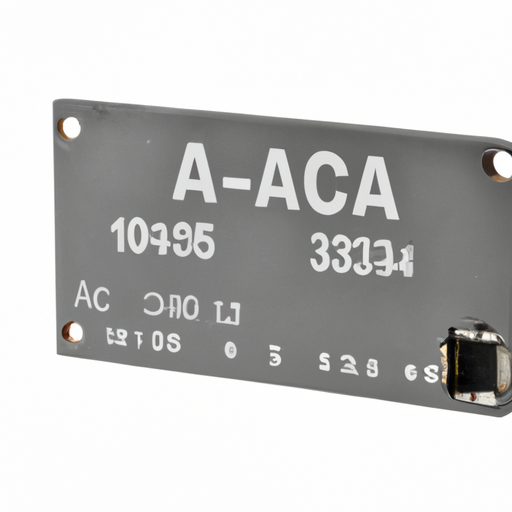
Overview of Digital to Analog Converters (DAC)1. Conversion Process DACs are essential components that convert digital signals (binary data) into analog signals (continuous voltage or current). This conversion is crucial for interfacing digital systems with analog devices, such as speakers, sensors, and displays.1. Audio Applications2. Signal Generation3. Control Systems4. Medical Devices5. Instrumentation1. High-Fidelity Audio Systems2. Industrial Automation3. Medical Imaging4. Robotics2. Resolution: The resolution of a DAC is defined by the number of bits it uses to represent the analog output. Common resolutions include 8-bit, 12-bit, 16-bit, and higher. A higher resolution allows for more precise control over the output signal, resulting in better fidelity and performance. 3. Sampling Rate: This parameter indicates how quickly the DAC can convert digital data into an analog signal. Higher sampling rates are vital for applications requiring high fidelity, such as audio processing and video playback.
4. Linearity and Accuracy: A high-quality DAC should exhibit linearity, meaning the output should be directly proportional to the input. Accuracy is also critical to ensure that the output closely matches the intended signal, minimizing distortion and errors.
5. Output Types: DACs can provide various output types, including voltage output (Vout) or current output (Iout), depending on the specific requirements of the application.
Applications of DACs Development Cases ConclusionDigital to Analog Converters (DACs) are vital components that bridge the gap between digital systems and the analog world. Their applications span various industries, including audio, industrial automation, medical devices, and robotics. As technology advances, DACs continue to evolve, offering higher resolutions, faster sampling rates, and improved accuracy, making them indispensable in modern electronic systems. The ongoing development and integration of DAC technology will likely lead to even more innovative applications and enhanced performance across various fields.